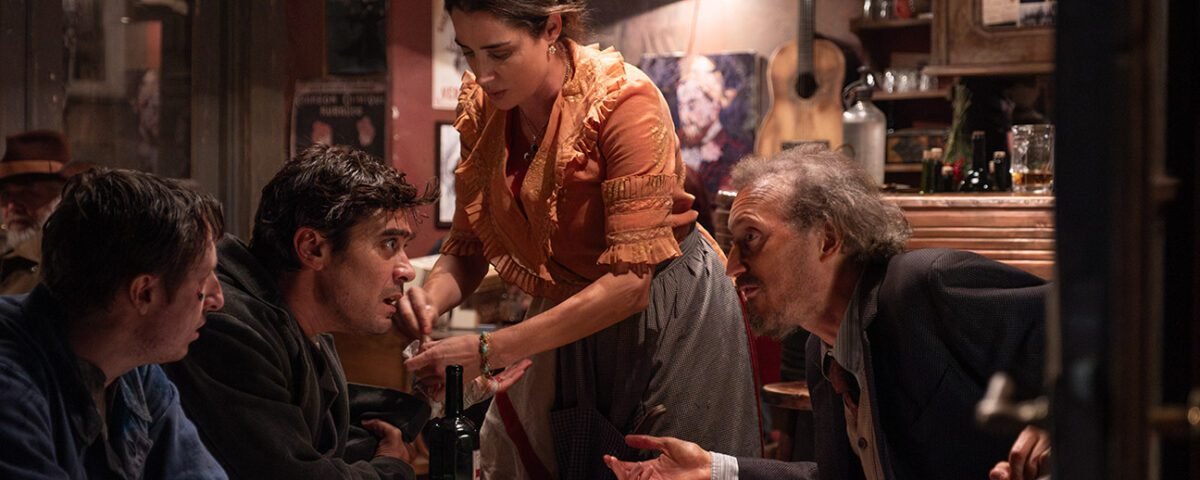


‘Salem’s Lot’ Review: A Stephen King Classic Gets Drained of Substance in Max’s So-So Adaptation
September 28, 2024


‘Afternoons of Solitude’ Review: Albert Serra’s Meditative Bullfighting Doc Is Equal Parts Hypnotic and Distressing
September 29, 2024Premiering at the San Sebastian Film Festival, the drama co-starring Al Pacino chronicles three chaotic days in the life of Italian painter and sculptor Amedeo Modigliani.
Modi, Three Days on the Wing of Madness
More sketch than portrait.
Johnny Depp hasn’t taken a directorial credit on a feature film (his 50-minute music video “Unloveable” doesn’t count) since he presented The Brave in Cannes in 1997, and that did not go well. Given that unhappy experience, you have to wonder what it was about Modi, Three Days on the Wing of Madness — a portrait of Amedeo Modigliani, a painter and sculptor famous for his talent as well as his taste for drugs, debauchery and scandalizing the straights — might have lured the actor to pick up the virtual megaphone again.
It turns out, according to the movie’s own press notes, that this project was at one point slated to be directed by Depp’s friend and onetime Donnie Brasco co-star Al Pacino, who instead takes a key but supporting role here as art collector Maurice Gangnat. Pacino suggested to Depp that he helm instead, and that seems to have been that.
At least Modi is likely to go down better than Modigliani, the 2004 full-on biopic that starred Andy Garcia and was prone to the kind of cheesy “Oh, hello there, Pablo!” dialogue endemic in such fare. Modigliani did indeed know Picasso, Gertrude Stein, Jean Cocteau, Juan Gris and all those early 20th century Parisian avant-garde hepcats. But the script here — the unwieldy credits attribute it to Jerzy Kromolowski and Mary Olson-Kromolowski, but based on the play Modigliani by Dennis McIntyre and “with additional material by Johnny Depp, Stephen Deuters, Jason Forman and Sam Sarkar” — keeps almost all of them offstage.
Instead, Modigliani’s inner circle for the 72 hours of his life we see here consists, plausibly, of fellow artists Maurice Utrillo (Bruno Gouery) and Chaim Soutine (Ryan McParland), his art dealer Leopold Zborowski (Stephen Graham) and the aforementioned Hastings, who was a journalist-critic and Modi’s lover-model-roommate around 1916 when the story is set.
Strictly in contemporary storytelling terms, Hastings probably makes for a better choice of love interest rather than Jeanne Hebuterne — a woman considerably younger than Modi who married him shortly after the time depicted in Modi, and was so devoted to him that she killed herself, while heavily pregnant, a few days after he died from tuberculosis in 1920. Desplat’s Beatrice, on the other hand, is a more relatable modern woman before her time, insistent on focusing on her own career. The first time we meet her here, she’s locked Modi out because she’s on deadline and doesn’t want his distracting drama at that moment. Later, when he says he’s a real artist and she merely writes about art, she quite rightly hurls a blunt object at him. I, for one, could completely relate.
In fact, Desplat’s Hastings is sufficiently interesting, and underrepresented as a historical figure in cinema, that some viewers may find themselves sighing in frustration when she’s not onscreen. Most of the running time is devoted to painting a very traditional icon, practically a gesso on wood, of yet another tortured male genius. Scamarcio is just about charismatic enough to hold attention, but Modi’s trajectory here — a countdown over a few days as he waits to pitch to famed collector Gangnat — doesn’t take us terribly far toward understanding what makes him tick or even why we should care.
Like so many pictures about artists, be they visual artists or composers or even writers, Modi, Three Days on the Wing of Madness doesn’t dare to engage with any seriousness about craft, application and technique or any of the nitty-gritty stuff that truly makes their creations important. This sort of kitsch is more interested in the truly irrelevant sex, drugs and rock ‘n’ roll nonsense of biography, and the film doesn’t even pay the real Modigliani the compliment of securing the rights to show any of his actual pieces. All the work we see, as far as I could tell from the credits, are passable but not entirely convincing pastiches.
More investment seems to have gone into getting the rights to include snippets of songs by the Velvet Underground and Tom Waits. One suspects that’s the kind of art that really floats Depp’s boat, although it’s cheering to see the film giving work to British cabaret beat-combo the Tiger Lillies, who provide a delightful musical bedding of oompa-pah oompa-pah noodling that recalls the brass band tunes in Emir Kusturica movies.





